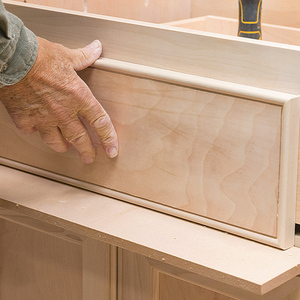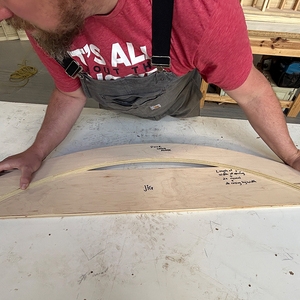*
Maybe it’s the acceleration part of the equation they’re working on. If the hammer has a 24″ shaft it would probably hit as hard.
Discussion Forum
Discussion Forum
Up Next
Video Shorts
Featured Story

Smart construction decisions and material choices can significantly improve occupant safety and survival in the event of a fire in the home.
Highlights
"I have learned so much thanks to the searchable articles on the FHB website. I can confidently say that I expect to be a life-long subscriber." - M.K.
Fine Homebuilding Magazine
- Home Group
- Antique Trader
- Arts & Crafts Homes
- Bank Note Reporter
- Cabin Life
- Cuisine at Home
- Fine Gardening
- Fine Woodworking
- Green Building Advisor
- Garden Gate
- Horticulture
- Keep Craft Alive
- Log Home Living
- Military Trader/Vehicles
- Numismatic News
- Numismaster
- Old Cars Weekly
- Old House Journal
- Period Homes
- Popular Woodworking
- Script
- ShopNotes
- Sports Collectors Digest
- Threads
- Timber Home Living
- Traditional Building
- Woodsmith
- World Coin News
- Writer's Digest


















Replies
*
If you dropped the 12oz titanium hammer off the roof at the same time you dropped a 12oz version in fibeglass or steel, which one would hit the ground first?
*
Chris,
I don't believe what you are saying is correct. I have a small ballpeen hammer (4 oz perhaps?) with which I can hit something with all my might and it will not break. I challange you to drive a 16nail in a couple of blows with it. But this is easy with a framing hammer. Imagine driving fenceposts with my ballpeen hammer!
I think that as you swing a hammer, you essentially store the energy produced by you muscles as kinetic energy in the head of the hammer. Within a reasonable range of hammer head weights, I would guess that the velocity at the end of your swing is pretty constant. If thats the case, then the heavier hammer will transfer more energy to the nail.
What the heavier hammer head is actually doing is storing energy during the swing which requires more effort, but is a more efficient use of the muscles during the swing. To get the same energy from the small hammer, you have to have a faster swing, and in the extreme case, such as my ballpeen hammer, you will not be able to swing it fast enough to match the force applied by the framing hammer.
Of course handle length and weight distribution, which affect the center of mass are critical in good hammer design. But my point is simply that the one ounce hammer cannot do the same job as the 28oz hammer.
*Easy.The one without wings.
*Richard B and Chris,What's being overlooked is the "snapping" of the hammer just prior to impact. It's also what drives a golf ball, baseball, or any other struck ball. If you stiff-wristed a hammer, you'd find that it didn't have the same power as when you cocked and released your wrist. I'm no physicist, but common sense says that no 12 ounce hammer head will equal a 20 ounce hammer head if the velocity and size of the arc are the same. It seems, however, that a lighter hammer with a longer handle could equal a standard hammer, just because the arc is larger and the snap is faster. Works with my titanium Greatest Biggest Bertha look-alike with the extra long shaft.
*
Lest you all forget....
b THE HAMMER IS 80 BUCKS!!!
*a fool and his money are soon parted!
*In reference to the original post, I think the formula Ron wants is momentum = mass * velocityWhen the hammer stops, the momentum is transferred to the nail (or thumb or whatever). At the same velocity, a higher mass would have more momentum. It may be possible to swing a lighter hammer faster, but I think most of us limit the speed of our swing so as to swing accurately.Just for the record, the "c" in E=mc2 represents the speed of light (not acceleration). The formula relates the amount of energy equivalent to a given amount of mass (i.e., if the mass were changed to energy as in an atomic reaction).
*I AM a physicist, and I recommend a compressor and a high quality phneumatic nail gun. Albert
*
The ad for this hammer claims "the same mass with less weight". This obviously must be accomplished with less gravity. Are they from the moon?
*You CAN do the same job with the 1 oz hammer, only you'd have to swing it with an angular velocity 28 times as fast as the angular velocity of the 28 oz hammer head. My point was based solely on the laws of physics, which the manufacturer uses to his advantage in advertising. The manufacturer neglects to mention how impracticle and unnatural it would be to use a super lightweight hammer.
*Tennis Courts of clay have nailed down tapes for lines...1950 plus nails per court held down with 2 1/2" aluminum roofing nails....That said I have custom hammers that my crew uses because we don't need as much force but we do take a lot of swings...I have cut and ground down the heads of all the hammers to reduce the weight to around 10 to 12 ounces...Saves greatly on fatigue and a tennis nailing version of carpel tunnel syndrome...So I guess I should invent and sell Titaniun Tennis court nailing hammers next.Near the stream, Happily opening tennis courts in Upstate NY,J
*
Just trying to think out loud, so please forgive if too far out. But... Titanium is known for its hardness. Would this lead to more energy being transferred to the nail? I was thinking of the relative driving abilities of a rubber dead blow mallot vs. a typical framing hammer of similar weight. Don't we use a softer ball pein hammer when striking a cold chisel or other (not thumb)hardened object.
*When the hammer stops moving, all of the energy in the hammer is transferred to the nail regardless of what material the hammer is made of (except for a minute amount of energy lost as sound, and perhaps some lost in the shock transferred to your arm). A dead-blow mallet transfers that energy over a longer period of time, thereby changing the affect on the target. I can't say whether a nail would drive better with a quick sharp blow or a
*When the hammer stops moving, all of the energy in the hammer is transferred to the nail regardless of what material the hammer is made of (except for a minute amount of energy lost as sound, and perhaps some lost in the shock transferred to your arm). A dead-blow mallet transfers that energy over a longer period of time, thereby changing the affect on the target. I can't say whether a nail would drive better with a quick sharp blow or one where the energy transfer was slower, but I'd guess that any difference would pale in comparison to the loss of mass in the lighter hammer.
*
Ted,
Joseph Fusco
View Image
*The force the hammer delivers to the nail is what drives the nail. For the titanium hammer to drive the nail equally, the head of the titanium hammer (with less mass) will need to be moving faster than the head of the conventional hammer.As Mike M. wrote, here on Earth, where, for this argument, gravity is essentially constant, it all comes down to weight. For simplicity of argument, consider all the weight in the hammer's head. The 21 oz weighs 1.75 times more then the 12 oz, thus has 1.75 times more mass.To get equal force on the nail, thus equal driving depth, the head of the titanium needs to be moving 1.75 times as fast at impact. This can be accomplished through faster arm movement, a longer handle, whatever, the Ti head just needs to be moving faster. What the Ti gives is a hammer head the same size as a conventional hammer at less weight. Consider the Titanium hammer to be a 12 oz finishing hammer with an oversized head. With equal handle length and equal swing speed, a 12 oz Ti will drive nails the same as a 12 oz finishing hammer.Most users have admitted it takes an extra swing or two to drive a nail, but they simply like it for the lighter tool belt load and easier swing.If the new Ti hammer has a radically designed handle that does a more efficient job of transfering arm energy into hammer head speed, then that's noteworthy, and that design will be mainlined. If not, you have to swing harder to ensure the head is moving 1.75 times faster then a conventional hammer to deliver the same force per swing to the nail as a conventional hammer. Faster swings may give less accurate hits, which may necessitate additional swings.If it's simply the Ti that's being hyped, then that's what it is...simply hype...unless you need a lightweight framing hammer that takes a faster swing or an additional swing to drive a nail.
*
Wouldn't you just use some atomic particle traveling at 90% the speed of light...would have the same effect as the light hammer...?
*Here's another titanium tidbit -- don't know for sure if it's relevant. The modulus of elasticity of titanium happens to be very similar to that of living bone, whereas steel is a good bit stiffer. Maybe this makes the titanium hammer more comfortable at the point of impact -- less jarring, more like an extension of your arm? And because it's more comfortable, there's less reflex cocontraction of the forearm muscles, and consequently less fatigue??? If this is indeed an effect, it might be more noticeable for those of us who are less experienced in the use of a hammer, since we might have more of a tendency to flinch on impact.Just a thought.
*Yes 21 oz = 1.75 * 12 oz but theb energytransferred is a function of the square of the velocity. Thus, the 12 oz hammer head does not need to be travelling 1.75 times faster.The 12 oz hammers's energy-equivalent velocity would be: sqrt(1.75 * V21 * V21)where V21 is the velocity of the 21 oz hammer and we've ignored the energy in any bounce.
*Hmmm. C - all of the above. If everyone stood to the east of the nail, and drove to westward, we could even slow down the earth's rotational speed and have longer days to drive even more nails, which slows things down even more... tidally locked, Lisa
*Gentlemen:I believe the formula is F=MA That is..Force = Mass x Acceleration. This is the formula that applies to this situation.Obviously, the force can be increased by raising either of the 2 variables. So, a lighter hammer can provide the same force as a heavier hammer if it is accelerated at a faster rate. All of this with the caveat that you should not try this at home and if you do, you should wear eye protection. Some people should even be wearing helmets. You know who you are.
*
Maybe Ron's original equation is correct.
E=M*C^2. "C" stands for cost. mass-times-cost-squared. Fill in 80 for C and that hammer really starts to perform!
Darrell
*Fred,
Joseph Fusco View Image
*
Joseph Fusco View Image
*
Chris
Try hammering a tack in with a sponge...who knows, maybe the hardness of the surface effects the transmission of kinetic energy.
Titanium golf clubs seem to work that way
*
Can't explain the new hammer but I understand it is Y2K compliant!
*Poor writing on my part. The 1.75 ratio is for equal force imparted. For F=Ma, the 12 oz would have to be accelerating at impact 1.75 times more than the 21 oz. For Kinetic energy, it is indeed a function of the square of the velocity. For equivalent Kinetic Energy, the 12 oz would have to have a velocity 1.32 times greater than the 21 oz hammer, 1.32 being the square root of 1.75. Thanks for pointing that out.
*But will it work with metric nails?
*Ben,What about the new titanium sponges...Near the stream enjoying the guessing game...J
*I have heard from somebody who heard from somebody that it is indeed metric certified. Pass the word.Ok, so why do the Scotts where the kilts I ask anyway...Cause the sheep can hear a d*mn zipper a mile away!Near the stream counted my sheep,j
*
Is the titanium in the head only or is it also in the shaft ?
Take a canoe paddle made of cherry or black ash, compare it to one made of fiberglass or alluminum. The hardwood paddle has aa kick at the end of the paddle stroke which increases power into the stroke and contains a damping quality that absorbs vibration, saving the paddler from tiring.
A hammer has the same requirements. The power and comfort are in the shaft and its ability to transfer its bending momentum - either into the hand and arm or down into the head and the nail -- and how the shock of the blow is released.
*
Except that the 'E' is defined as economic drain.
Oh well.
*Maybe a titanium hammer has a lighter handle, allowing a higher percentage of the 12 ounces to be concentrated in the head. Due to rotational inertia, a higher percentage of the weight being away from the center of swing, more force would be applied to the nail.As mentioned, not all the force is applied to the nail. Some is transfered as noise, vibration of the building, or even light. I was hammering on some concrete the other day, and could actually see some of the rocks glowing orange from some of the blows. As it was a clear day, that means that photons of that light could have actually escaped the earth and are traveling to another solar system as we speak...
*
I got a catalog from "Duluth trading Co." the other day. It has a hammer in it they call "The world's first titanium hammer". They claim it's "only 12 oz. and delivers the same punch as a 21 oz. framing hammer".
This sounds like snake oil to me. Is this really possible ? If energy = mass times acceleration squared (E=MC^2), wouldn't the hammers have to be the same weight to get the same work done ?
By the way - the hammer costs $80.
*does it require a compressor
*I have to admit I'm very skeptical, but if you look back (do a search for titanium) you'll see this hammer's been the subject of discussion here previously, and everyone who's used it seems to like it. Of course, who's going to spend $80 on a hammer and then admit they've been taken? Could be purely psychological :-)
*Maybe it's the acceleration part of the equation they're working on. If the hammer has a 24" shaft it would probably hit as hard.
*If the head is the same mass but the handle is lighter, the force on the nail would be the same and the shock on the wrist would be less. I would believe that it hits like a 16 oz. hammer but not a 21.
*Don't you guys ever check the tools folder??Browse on over there and see that this discussion has been going on for some time.
*Ron, the titanium hammer manufacturer is correct. The hammer is simply a means to transfer the energy provided by your arm into driving the nail. The hammer itself provides no work. If one could make a 1-ounce hammer strong enough (ie - it wont crack, break, fracture, you name it), it could do the same job. Having the extra weight, though, is nice because it makes the hammer swing steadier and has inertia. There is a reactive force immediately felt when you hit the nail. The total reactive energy absorbed by your arm will be the same, regardless of the weight of the hammer, but it will FEEL more intense with a lighter hammer because the reactive acceleration in your arm will be greater. For these reasons, many people prefer the heavier hammer, just for the "feel" and the steadiness it provides.
*
I wonder if all this discussion concerning the titanium hammer's ability to drive nails is beside the point? In order to properly evaluate it's long term utility , what we really need to know is; is it Y2K compliant????